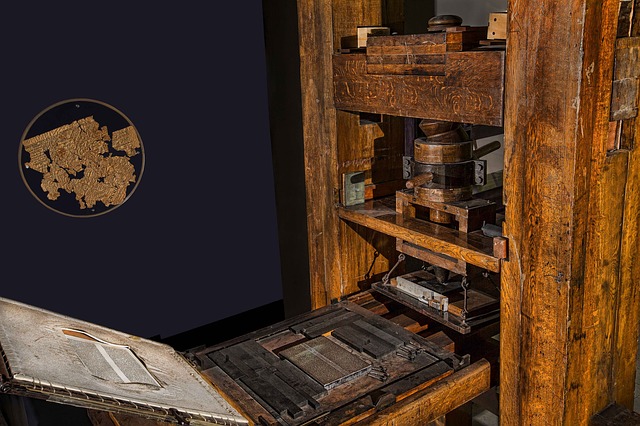By Eleni Papageorgiou,
History begins with writing. It is this invention that allowed man to rush forward and reach achievements that would have been unthinkable in pre-historic times. What happened during those years when almost nobody had access to education and knowledge was a privilege of upper classes? What were the means that helped teachers spread their knowledge?
The history of teaching-instructing-guidance accompanies the human race almost since its very existence. Parents have always guided their offspring, giving useful advice for their survival. The first signs of communication are carvings and marks in caves or on rocks. Signs of written language can be traced back to the 6th century B.C. and onward (cuneiform, hieroglyphics, Linear A and B, etc.). Gradually, being able to communicate through written language was a privilege given only to a restricted few in the community.
The invention that totally changed humanity was printing. Of course, we all know that the year 1440 was significant for the invention of printing and the first printed book (1455) by Gutenberg. Although we are referring to only 180 copies, it was a big success for the 15th century society. This helpful kind of machine facilitated monks and scholars to create true copies of books that -until that point- only they had access to, such as the Bible and many other ancient Greek and Roman books. Since the books could now be printed cheaply and in great numbers, more and more people were able to acquire knowledge and be educated. Universities appeared all over Europe and higher education was offered to large groups of people.
What most people are likely to ignore is that, after many years, another medium changed the way ordinary people got in touch with learning and especially writing. Only 225 years ago, the project of the modern pencil was taken up by Nicolas Jacques Conte and in 1832 the first factory to ever produce pencils was leading the way towards not only communication but also learning. Scholars and students could write on paper -another great invention˗ and keep notes.
Although, objects are practically things to motivate a person to study, there are many other important factors that must be taken into consideration. From the Enlightenment years onwards, people have focused on establishing the rights to education, freedom of speech, the ban of slavery, the independence of women and many constitutional rights. In this direction, progress on education systems was gradually achieved.
After many years of movements, wars, poverty but also flourishing, the invention of the computer in the early 1930s, came to shake things up. Instead of calculating millions of mathematical equations, using thousands of books, and spending an incalculable amount of time searching for information, computer users could now write and read on their screen by simply pressing buttons on their keyboard. A key factor for the wide use of computers was the invention of the Internet. This development took years of studies and experiments from 1961 until 1969, the year that the first online network was established at UCLA. E-books appeared in the late ‘90s and interactive whiteboards were introduced at schools. Moving towards paperless education, computers have become an essential part of teaching. Educators and students learn in different ways today.
New methods and approaches have been ongoing and lifelong learning has become a reality. Education for handicapped people has been facilitated. The Braille code, Braille printers, sign language, robotic mechanisms for the disabled are just a few of the innovations that humanity can be proud of. Literally, no one is excluded from education and literacy is a priority for most developed, developing and under-developed countries.
New careers have emerged -software designers, computer programmers, technicians, graphic designers etc. Blended learning (combining digital media with traditional forms of teaching), gamification, mobile learning, live lessons from remote places, special education, presentations, role-playing, service learning, exchange programs and hundreds more methodologies and techniques are all signs that education is a living, moving and constantly transforming body that is under continuous progress. A typical example of progress is the fact that during the pandemic teaching has found ways to keep up through online courses, transcribing books into digital forms and using screens as blackboards. Mandatory online classes for the sake of social distancing were applied only in a few months. Who knows what education will be like in 100 years from now?
References
- BRAINPICKINGS, The Surprising History of the Pencil. Available here.
- HISTORY, Printing Press. Available here.
- BRITANNICA, Who Invented the Internet?. Available here.






